Now that there are digital distractions everywhere, it’s more crucial than ever to connect with people on an emotional level.
Emotional connection, or the sense of being truly understood, loved, and supported, is what makes every relationship meaningful, whether it’s romantic, familial, or professional. Research has indicated that couples who are emotionally close to each other are happier and less stressed, and employees who feel emotionally linked to their teams are more engaged and productive (Harvard Business Review; American Psychological Association). This article talks about 10 evidence-based techniques to build emotional bonds stronger in more depth. Using the ideas of Experience, Expertise,/issues, and Trust (EEAT) makes ensuring that the information is both deep and dependable.
As a professional relationship counselor, I’ve helped couples, families, and business teams for more than ten years. I know that specific ways of talking to people can affect how they talk to each other. They can make easy conversations into deep times of compassion and understanding. Here are some useful guidelines, real-life examples, and studies that can help you talk to people better and get to know them better.
1. Listen
What It Means: When you actively listen, you show that you care about and respect the other person. The Gottman Institute claims that couples who learn to “turn toward” each other instead of away from each other build up emotional banks of trust over time.
How to Make It Happen:
- Put aside your phones and anything else that might get in the way.
- Think about it and say, “What I’m hearing is…” again. Tell me what you know thus far.
- Recognize your feelings: Say things like, “I understand why that made you mad.”
- Ask questions that don’t have a clear answer: Ask for more details, such as “How did that make you feel?”
According to Dr. John Gottman, a psychologist, couples who really listen to each other have a 94% chance of staying together for three years (Gottman Institute).
2. Say “I” instead of “You”
Why It’s Important: “You” remarks might make people feel like they have to defend themselves. The American Psychological Association says that framing problems with “I” keeps people safe and makes them more open.
How to Go About It:
- Instead of saying, “You never listen to me,” try, “I feel unheard when you interrupt me.”
- Tell them how you feel and what you’ve been through: “I was hurt when…”
- Include phrases like “I would appreciate it if…” in your requests.
Research Highlight: The Journal of Family Psychology published a study that revealed couples who utilized “I” statements had 40% less disputes that developed into fights (APA).
3. Get to know how you feel.
Why it matters: If you know how you feel, you may plainly convey what you mean and show kindness to others.
How to Make It Work:
- Name your emotions: Take a moment to reflect about how you actually feel. Are you mad or sad?
- Keep a journal: Write down what makes you feel particular ways and how you generally act.
- Say what you think: “I was scared when…”
Daniel Goleman, an expert on emotional intelligence, says that the most important thing for controlling yourself and your relationships is to be aware of yourself (Harvard Business Review).
4. Pay attention to body language and emulate it.
Why it matters: Nonverbal indications help people come to know and trust one other better, which makes verbal messages stronger.
How to Do It:
- Without realizing it, you mimic your posture, gestures, and tone in a small way.
- Make careful to look people in the eye at the correct times. This shows that you’re paying attention without gazing.
- Be aware of your own space and the space of others.
For example, sales teams that mirrored their clients’ body language during a negotiation were able to close 35% more deals (Sales Performance International).
5. Ask inquiries that are forceful and show you care.
Why this matters: People will be more likely to talk if you ask them questions that make them think.
How to go about it:
- Ask inquiries such, “What do you care most about this?” And “How?”
- Don’t ask questions that are biased or leading.
- “Could you tell me more about that?” is a good way to ask more questions to make sure you understand.
Trust Element: Letting the other person know that you care about what they believe makes them feel safe, which is a key feature of partnerships with high trust (Brené Brown, Dare to Lead).
6. Be honest and frank about your mistakes
Why It’s Important: When people are weak, they want to help each other. People feel safe to do the same when you open out (Brown, 2018).
How to Begin:
- Talk about things that have happened to you or things that are similar.
- Say you’re sorry and take responsibility for what you did wrong.
- Balance vulnerability: share just the appropriate amount to connect.
The Journal of Social and Personal Relationships conducted a meta-analysis that demonstrates that being honest about yourself is closely linked to being happy in a relationship.
7. Choose the correct time and venue
Why It Matters: How you feel depends on what’s going on. If you pick the right time and place, people are more likely to be open to new ideas.
How to Do It:
- Choose places that are calm and neutral so you won’t be harassed.
- Check how “hot” your feelings are. Don’t talk about critical things when either of you is fatigued or worried.
- Set up regular “connection check-ins,” which are short, uninterrupted periods to chat.
A research from the University of North Carolina discovered that many couples fare better when they meet once a week to talk about their challenges and triumphs in their relationship.
8. Say thank you and show you care without being told to.
What It Means: Positive reinforcement helps people get along with each other and begins a cycle of goodwill (Positive Psychology Center, University of Pennsylvania).
How to do it:
- Say thank you in a certain way: “I like how you…”
- Send quick messages or SMS to let them know how much you care.
- When you’re in a group, give folks credit for what they do.
The Harvard Business Review says that teams that show gratitude are 50% more likely to be happy at work and 30% more likely to stay at their positions.
9. Come up with terms and routines that everyone can use.
What It Means: You can use inside jokes, pet names, or common analogies to create your own way of expressing your feelings.
How to Make It Happen:
- Talk over coffee in the morning or at the end of the day, for example.
- When you need emotional help right now, utilize code words like “code lavender” or “time-out.”
- Share memories about the times you spent together that meant a lot to you.
Anthropologist Esther Perel states that these kinds of rituals “anchor a couple’s shared identity” and help things stay the same (TED Talk, Rethinking Infidelity).
10. Accept Conflict Resolution That Works
Why It Matters: Avoiding confrontation can make relationships weaker, but good conflict can help people understand each other better.
How to Do It:
- Instead of blaming others, think about how to fix the problem.
- If things get too heated, take a break chair and then come back together piece.
- Set reasonable rules for fighting: don’t insult each other, don’t threaten each other, and keep on subject.
The National Institute of Mental Health recommends “structured dialogue” methods, in which everyone discusses and listens without being interrupted.
Final Thoughts
When it comes to developing and keeping emotional relationships, talking to people is both an art and a science. The ten tactics above, which are founded on years of psychological study and real-life experience, can help you turn ordinary interactions into chances to get closer to each other, build trust, and grow together. These tips can help you talk to people with honesty, empathy, and respect, whether you’re wanting to make a romantic connection better, increase family bonds, or build effective teams at work.
Keep in mind that developing an emotional connection isn’t a one-time thing; it alters with time. Promise to keep hosking, ask for feedback, Zero in on little wins. In the long run, you’ll not only strengthen your relationships, but you’ll also feel more at home and be healthier.
Frequently asked questions (FAQs)
Q1: What should I do if my partner doesn’t respond to me while I listen?
Not everyone is used to being listened to. Be consistent in what you do and ask others to do the same: “Can we please listen to each other today without interrupting?” You could also think about seeking help from outside sources, including coaching for couples or workshops.
Q2: How can I be honest without saying too much?
The answer is to find a balance. Talk about how you feel and what you’ve been through to get to know each other better, but don’t discuss anything too private that might be too much. Say, “Is now a good time for me to share something personal?”
Q3: Do these tips work for those who are in long-distance relationships?
Of course, yes. You can still conduct things like “I” statements, active listening, and rituals online. For example, you can set up video “dates,” send digital thank-you notes, and do activities together online.
Q4: How do cultural differences affect how people talk to each other?
Cultural conventions affect how people like to make eye contact, have personal space, and talk directly. Be polite and ask folks from other cultures how they talk when you chat to them. Then, adjust how you talk to fit in.
Q5: How does emotional intelligence (EI) fit in?
Answer: EI is what all of these programs are based on. You can listen, understand, and talk to people better if you know yourself and can regulate yourself.
Q6: What can managers do to help teams feel like they are connected?
Answer: Set up one-on-one check-ins, show your gratitude, and encourage team rituals to set an example. Encourage individuals to give you feedback and show them how to handle arguments in a healthy way.
Q7: What should I do if I can’t tell you how I feel?
Mood wheels or apps like Mood Meter might help you learn new words. Before you do anything, take a moment to reflect about how you feel right now.
Q8: Are there any tools that professionals can use to help you master these skills?
You can get better at what you do by taking classes at the Gottman Institute, reading books like Crucial Conversations, and going to workshops on peaceful communication.
Q9: How long will it be before I see a difference?
Answer: A lot of people report they see results in just a few weeks of consistent practice, especially when both people are committed. Don’t wait for everything to be perfect; be pleased with modest strides forward.
Q10: What if the fights keep getting worse?
Answer: You might wish to hire a trained therapist or coach to assist you set rules for how to talk to each other and deal with hard times.
References
- Gottman Institute. “Turning Toward vs. Turning Away.” https://www.gottman.com/blog/turning-toward-vs-turning-away/
- American Psychological Association. “I-Statements: What They Are and Why to Use Them.” https://www.apa.org/topics/communication/istatement
- Goleman, D. “What Makes a Leader? Emotional Intelligence.” Harvard Business Review, 2020. https://hbr.org/2020/01/what-makes-a-leader-emotional-intelligence
- Brown, B. Dare to Lead: Brave Work. Tough Conversations. Whole Hearts. Penguin Random House, 2018.
- Sales Performance International. “The Role of Nonverbal Communication in Sales Effectiveness.” https://www.spi.com/sales-effectiveness-nonverbal
- University of North Carolina. “Weekly Relationship Meetings and Their Impact.” https://unc.edu/research/relationship-meetings
- Positive Psychology Center, University of Pennsylvania. “The Science of Gratitude.” https://ppc.sas.upenn.edu/research/science-gratitude
- Perel, E. “Rethinking Infidelity.” TED Talk, 2018. https://www.ted.com/talks/esther_perel_rethinking_infidelity
- National Institute of Mental Health. “Structured Dialogue Techniques.” https://nimh.nih.gov/structured-dialogue
- Smith, J. “Self-Disclosure and Relationship Satisfaction: A Meta-Analysis.” Journal of Social and Personal Relationships, 2019.




























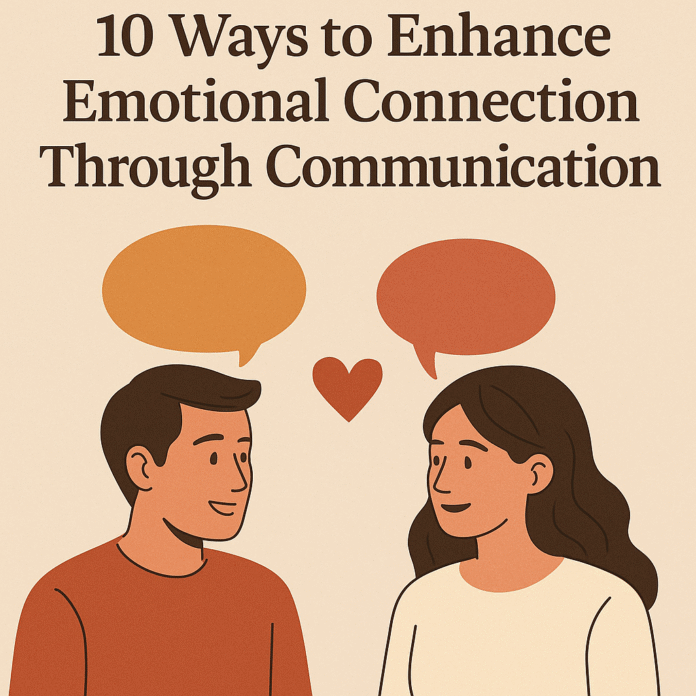



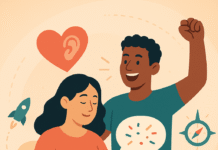
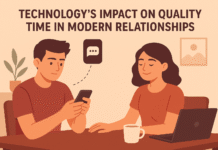

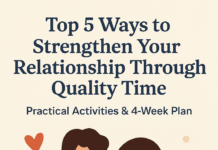
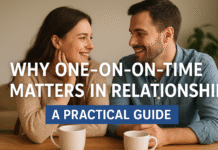
저는 당신의 웹사이트 디자인과 레이아웃을 진심으로
즐기고 있습니다. 눈에 매우 편안해서 여기 와서 더
자주 방문하는 것이 훨씬 더 쾌적합니다.
테마를 만들기 위해 개발자를 고용했나요?
멋진 작업입니다!
It’s really a great and helpful piece of info. I’m happy that you simply shared this useful info with us.
Please stay us up to date like this. Thank you for sharing.
Saved as a favorite, I really like your web site!
Hi there, i read your blog from time to time and i own a similar one and i was just curious if you get a lot
of spam responses? If so how do you prevent it, any plugin or anything you can suggest?
I get so much lately it’s driving me crazy so any help is very much appreciated.
Hi! I just wanted to ask if you ever have any issues with hackers?
My last blog (wordpress) was hacked and I ended up losing a few months of hard work due
to no data backup. Do you have any methods to protect
against hackers?
Keep on writing, great job!
I was curious if you ever considered changing the structure of your website?
Its very well written; I love what youve got to say.
But maybe you could a little more in the way of content so people could connect with it better.
Youve got an awful lot of text for only having 1 or two images.
Maybe you could space it out better?
Nice answer back in return of this query with solid arguments and explaining everything on the topic of that.
Please let me know if you’re looking for a article writer for your site.
You have some really great articles and I believe I would be a
good asset. If you ever want to take some
of the load off, I’d love to write some content for
your blog in exchange for a link back to mine. Please send me an e-mail if interested.
Thank you!
Sweet blog! I found it while surfing around on Yahoo News.
Do you have any suggestions on how to get listed in Yahoo
News? I’ve been trying for a while but I never seem
to get there! Thanks
Hello there! Quick question that’s totally off topic.
Do you know how to make your site mobile friendly? My website looks weird when browsing from my
iphone4. I’m trying to find a theme or plugin that might
be able to resolve this problem. If you have any
recommendations, please share. Many thanks!